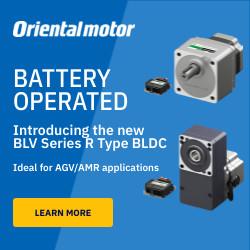Introducing the Processor Independent Embedded Platform by E3 Embedded Systems
The Processor Independent Embedded Platform (PIEP) may revolutionize embedded development. With the PIEP, engineers, educators and enthusiasts will be able to finish their projects more quickly and easily.
Augusta, GA August 20, 2014
In a world of smart phones, smart appliances and soon to be smart everything, the need for robust embedded development systems has never been higher. E3 Embedded Systems is redefining expectations for embedded development with its patent-pending Processor Independent Embedded Platform. As the name implies, PIEP supports a number of embedded controllers; spanning many popular architectures. The system also contains many other innovative features.
PIEP's design is rooted in over 20 years experience by E3 personnel, designing custom embedded solutions for industry and hobbyists. The result is an extensively engineered system optimized for field-deployable industrial systems, educational development platforms and experimental prototyping. Starting in August 2014, PIEP products can be pre-ordered via E3s Kickstarter campaign.
PIEP processors and peripherals mate through a 4 X 4" form factor motherboard. Changing processors and architectures simply entails swapping the processor module via the high density / low profile processor interface header. Currently supported processors include the Atmel SAM3X8E ARM processor, Freescale MC9S12XDP512, and Microchip dsPIC33EP256MU184.
PIEP Peripherals mate with the PIEP motherboard through 12 stackable headers (6 top/6 bottom). For many applications, up to 3 boards per header (36 boards per system) can be accommodated. For even more options, peripherals can be installed remotely by means of the PIEP remote mount kit. Peripherals mounted both on the motherboard and remotely are secured using 1/4" standoffs, ensuring the boards remain firmly in place, even under harsh operating conditions. External signals are interfaced to peripherals through friction locked JST 2mm pitch headers. Crimped 6" leads are supplied with peripherals or users can purchase compatible crimp pliers for a nominal fee from many electronics hobby shops and retailers.
With PIEP, no detail is too small. The PIEP motherboard contains two high efficiency switching regulators, rated at 2.5 Amps each, supplying both 3.3V and 5V power rails. The system is rated for 2 Amps continuous use (1 Amp per peripheral header max) and 2.5 Amps for limited duty usage. In addition, processor and debugging interfaces for JTAG-20, Freescale DBG, and PIC ICD, among others, are directly supported through dedicated interface headers and adapters.
The feature-rich, flexible, scalable, and rugged PIEP development system offers a complete embedded solution for hobbyists, engineers, and educators. To find out how PIEP can meet your development needs, visit us on the web at http://www.e3embedded.com or contribute to our KickStarter campaign (coming in August, 2014).
Featured Product

Oriental Motor USA - Ideal for AGV/AMR Applications
The BLV Series R Type brushless DC motor (BLDC motor) speed control system offers the design of motor and driver significantly reduced in size and weight, yet high-power, and contributes to the battery driven automation. The BLV Series R Type is compatible with the two interfaces of Modbus (RTU) and CANopen communication.
